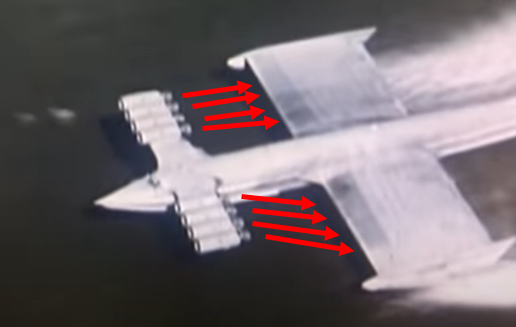For aerofoils to generate lift, they require airflow to pass underneath them. In almost all cases such as on aircrafts, this a natural part of ‘take-off’ with the vehicle lifting off once it has reached a speed that the wings can generate sufficient lift.

One trick designers of Ground Effect Vehicle (GEV) & Wing In Ground (WIG) occasionally use is ‘Power Augmented Ram Thrust’ (PAR) where an auxiliary engine (or engines) are used to force airflow underneath the wings or body to assist in the creation of an air cushion. This allows these vehicles to take off into ground effect at a lower speed which significantly increases safety and reduces the stress of the structure.

This was leveraged on both the Soviet KM and Lun Ekranoplanes where thrust from its 8 turbojet engines were vectored under the wings during the take-off phase. Once in ground effect, these 8 forward-most engines could be vectored rearward, or in the case of the KG throttled down for fuel economy and remain airborne on only the two rear engines mounted on the tailplane.
A more refined implementation was used on the smaller A-90 Orlyonok Ekranoplane where the thrust was forced under the wings from a pair of Kuznetsov NK-8-4K turbofan engines mounted on the upper nose above the cockpit. After take-off the engines were shut down for fuel economy and to reduce ingesting water.

Smaller crafts such as the UH-19XRW have very successfully used this principle to achieve stable flight in ground effect at very low speeds.
Have you seen PAR thrust used in applications or other crafts? Let us know in the comments below